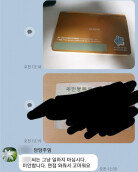History Is Carved in Chinese Characters
History Is Carved in Chinese Characters
Posted November. 12, 2005 08:44,

Following the History of Chinese Characters; by Kim Gyung-il; 284 pages; 12,000 won; Bada Publishing House
Chinese characters are the last surviving hieroglyphics in the digital age.
Chinese characters still continue to this day, having given birth to different cultures from period to period. The ancient figures that were carved on turtle bones still survive in this age of the e-pen.
Hegel emphasized the supremacy of the Caucasian culture by belittling Chinese characters, calling them sensory characters that belong to the lowest stage in the development of characters. However the beauty of Chinese characters has gained more attention than ever in the 21st Century, an age where the harmony of image and sense, or image and text, are being emphasized. This surely has turned the tables in the history of civilization.
Within each one of the Chinese characters are the breaths of the numerous people who have traveled through China, Korea and Japan throughout history. The lives of the Asians, and the pattern of history weaved by the longitudes and latitudes of those lives are tattooed into them.
The author has explored the origin of East Asian culture by deciphering inscriptions on bones and turtle backs, and also characters from the Bronze Age. This is how he explains the reason we should do a deep study of Chinese characters:
Whether we like it or not, we are cultural beings cultivated by Chinese characters. Chinese characters are a historical icon that remembers every single aspect of East Asias deeply inflected culture. Only when we listen to them can we earn cultural insights and new wisdom.
The author goes through the changes that occurred in Chinese writing, from pictographs to bone inscriptions, gilt letters, seal characters, ornamental characters, cursive characters, semi-cursive characters, printed style characters, and simplified characters. As he does so, he also goes through the footsteps of language and humanity.
Let us look into the age of cursive and semi-cursive characters.
When the mighty Han Dynasty lost its reins of power and the Period of North and South Dynasties kicked in, Taoism, which at the time was like an indie band, became the mainstream ideology. Catching the wind of this flexible era, the Han Dynastys semi-cursive writing took an artistic turn.
Chinese characters used to be merely political, but after it took an artistic twist, Wang Xi-zhi set free the style of ornamental writing.
However Chinese characters gradually lost their lives in the Song and Ming Dynasties, and faced their bitterest fate during the revolution in the late Ching Dynasty. In the early 20th Century the intellectuals pointed out the Chinese characters, the bowls of Confucianism, as the reason for the nations downfall. Everybody shouted, If Chinese characters survive, China will die! However the Chinese characters did not die. After much complication, the Chinese finally realized, If the language dies, so will the nation!
Mao Tse-tung was the one who attempted a compromise in this contradictory situation. By removing certain parts of Chinese characters, he elongated their lifespan. These are the simplified characters that we know today. Once again, Chinese characters were refined.
The Chinese language flows slowly like a river through the middle of a world dominated by the English language. Where does its vital power come from?
They say it is the power of hieroglyphics. It is the power of pictures, the power of images. Image transcends explanation. It is a fastball tossed directly at the intuition. We can call it the mobile phone of the off-line world.
Chinese are about to introduce a new method of communication that combines icons and text. Today, the Chinese are drifting into the sea of deep images that are hidden within their language.
Gi-U Lee keywoo@donga.com







